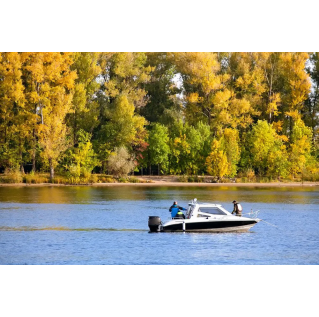Winter is here, which means it’s time to rev up the ol’ snowmobile and have fun riding the trails. Before you take it out, there are a few maintenance steps that you should perform to ensure that it’s working correctly, and it won’t breakdown when you’re miles from nowhere.
The first step is to refer to your owner’s manual and perform any recommended general maintenance tasks or repairs. While snowmobile models differ in configuration, they all operate in the same general way, and there are several things that you can do to help ensure a fun and safe winter ride.
Visual Inspection
If you’re like most people, you probably have your snowmobile stored in a garage or shed. If so, pull it out of the enclosed space it’s been hibernating in and out into the daylight so you can visually inspect it:
- Check all the parts to ensure that nothing came loose.
- Look for wear and tear on the idler wheels and belts.
- Keep a sharp eye out for cracking and buckling near high-stress areas.
- Look at the ground where it was stored—notice any fluid leaks?
- Lubricate all parts with a grease gun as per the owner’s manual.
Check Your Battery
Battery inspection and maintenance are critically important as it not only allows your snowmobile to keep running but also powers the headlights that will enable you to clearly see the road ahead of you in low-light conditions.
If you’re not sure when the last time the battery was replaced, there’s no better time than now to buy a snowmobile battery that’s designed to withstand the rugged conditions of the outdoors.
Fluids
There are three primary fluids that you should check before starting it up. Coolant and brake fluid levels should be checked and topped off with the correct grade on the master cylinder.
If there’s any gas left in the tank, be sure to drain it. Gas can deteriorate over time and potentially cause significant problems if run through a snowmobile engine. Even if you added a fuel stabilizer to the gas tank before you put it in storage, there’s a chance it could have gone bad.
Hoses, Lines, and Carburetor
If your snowmobile has a carburetor, take the time to physically inspect and clean if need be. A dirty carburetor is the main culprit for engine failure for snowmobiles just taken out of storage.
Be sure to check your lines, hoses, cables, and belts to ensure that they haven’t cracked and are working as specified in the owner’s manual. If you notice anything that doesn’t seem right, it’s better to replace it than worry if it will fail when you’re on the trail, miles from civilization in freezing temperatures.
Check Your Clutch
As you’re inspecting your belts, keep an eye out for missing pieces, hourglass shapes, and fraying. This is a clear indication that your clutch is on its way out. Once you get to the clutch, look for obvious and not-so-obvious signs of wear such as:
- Missing fasteners
- Damage (of any kind)
- Dirty or cracked sheaves
When in doubt, it’s best to bring it to a mechanic who specializes in snowmobile repairs. The whole point of a pre-inspection for your snowmobile is to give you 100% confidence that everything is in proper working condition. If you’re unsure at any point during your inspection, bring in a professional for a second opinion.
Look at Your Skis
Broken or damaged skis can present a severe safety hazard. If you have plastic skis, inspect them for cracks, cuts, and pits. If you have steel ones, look for areas where the metal has worn down. Much like your belts and hoses, if you notice anything out of the ordinary, it’s best to replace it now as you never know when something will fail.
Look at the Shocks
Shocks will often need to be replaced every 1,000 miles. It varies depending on the model, and your owner’s manual should provide you with an exact number. Due to the wear and tear they face out on the trails, you should ideally change them once a year, even if you’re nowhere near the recommended mileage limit.
Humidity in the air can cause moisture to build up inside your shocks over time. When taking your snowmobile out in freezing weather, that water can actually freeze and cause severe damage or complete failure.
Give it a Wash
Washing your snowmobile not only removes an entire season of dirt, grime, and dust, but it can act as a last-ditch safety mechanism. If you break down and are forced to spend the night in the wilderness, a bright shiny snowmobile is much easier to spot by rescue parties than one covered in dirt and grime.
The removal of dirt and grime can also prevent that material from entering into other critical components of the snowmobile and causing premature failure. Best of all, it just feels nice to have a clean ride while out on the trails.
Best Battery for Your Snowmobile
Continental Battery is a top market brand when it comes to snowmobile batteries. We have the tech know-how to deliver a reliable and heavy-duty battery that can withstand the rigors of operating your snowmobile out in the wilderness.
At Continental Battery, we’ve been providing our customers with high-quality batteries for well over 85 years. We’re dedicated to developing and maintaining great, and long-lasting customer relationships backed up by our superior quality products.
Contact us today to learn more about our company and line of snowmobile and Powersports batteries.







